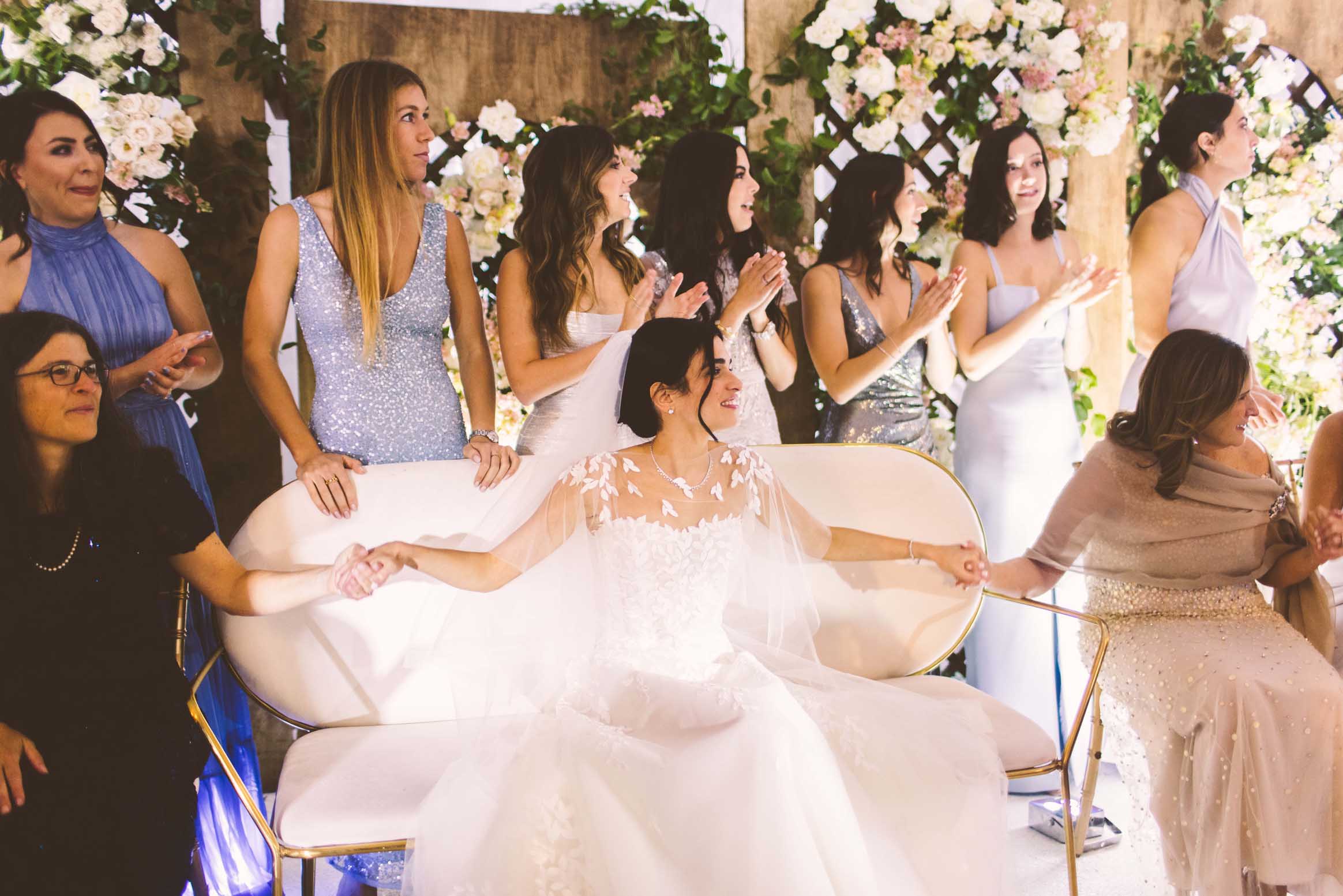Everything You Need To Know About Jewish Wedding Traditions

If you’re a Jewish bride-to-be or a groom who wants to learn everything about our (Jewish) wedding traditions and who’s busy wedding planning, you are in the right place. There are several Jewish wedding traditions to think about incorporating into your big day. From shouting “Mazal Tov!” to indulging in a magnificent wedding feast, we photograph many amazing Jewish weddings as top wedding photographers here in NYC. So today we thought we’d walk you through some of the most popular traditions while sharing photos of our gorgeous couples.
Take a look…
Table of Contents
- Remembering the October 7th and the Hostages
- The Ketubah Signing
- The Tisch
- Bedeken
- The Chuppah
- Circling
- Exchanging Rings
- Seven Blessings
- Breaking of the Glass & Mazel Tov
- Yichud
- Hora
- Booking us ensures your Jewish wedding memories will be captured with the best quality and care.
Remembering the October 7th and the Hostages
Following the events of October 7, 2023, new customs have emerged to honor resilience and unity. Many couples now incorporate Israeli flags into their décor, attire, accessories and dancing, set aside a table in remembrance of hostages, and include Israeli songs into the program, especially “Am Yisrael Chai” by Eyal Golan to express solidarity and hope. These additions blend contemporary expressions of identity with time-honored practices, enriching the wedding experience.
To us, as Jewish and Israelis with family in Israel this is always a source of tears and excitement!
The Ketubah Signing
The Ketubah Signing is considered the most important part of the Jewish wedding ceremony and it takes place before any of the festivities start. It’s a symbolic marriage contract that’s part of Jewish civil (not religious) law.
This contract outlines the responsibilities a groom has to his bride as well as the bride’s rights. Primarily, it establishes the groom’s financial obligations to her in the event of his death or if the couple should choose to divorce. Two witnesses are to be present while the couple signs the ketubah. Later during the ceremony, it’s read out loud to everyone present.
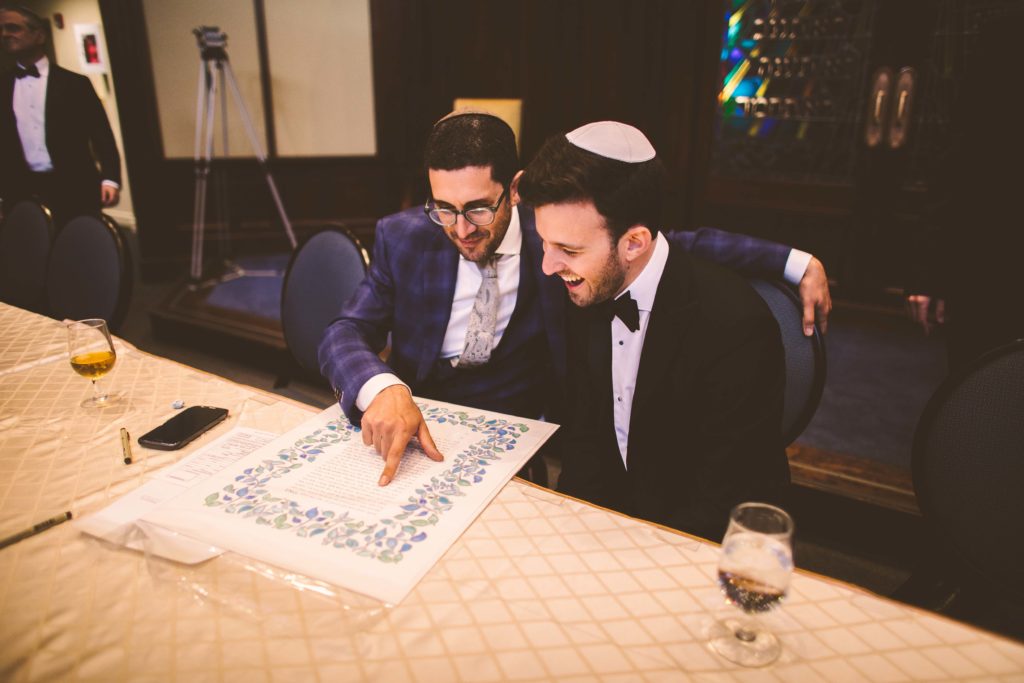
The Tisch
Two traditions that are integral to a Jewish wedding ceremony are the Tisch and Bedeken. The “Tisch” (not the “Tish”) is a pre-wedding celebration that the groom hosts for his male friends, relatives, and the Rabbi. The word Tisch means “table”, and that’s just what this part of the wedding day is about. It’s a tradition where guests gather around a table to eat and drink, catch up on what’s been going on in their lives, and congratulate the groom. The atmosphere is usually very energetic, and there’s typically a lot of singing and dancing that goes on. Afterward, the groom will leave to see his bride for the first time on their wedding day!
Not all grooms choose to have a Tisch. Some opt to greet guests arriving for the wedding instead. The choice to have a Tisch or not really depends on the couple and their individual preferences.
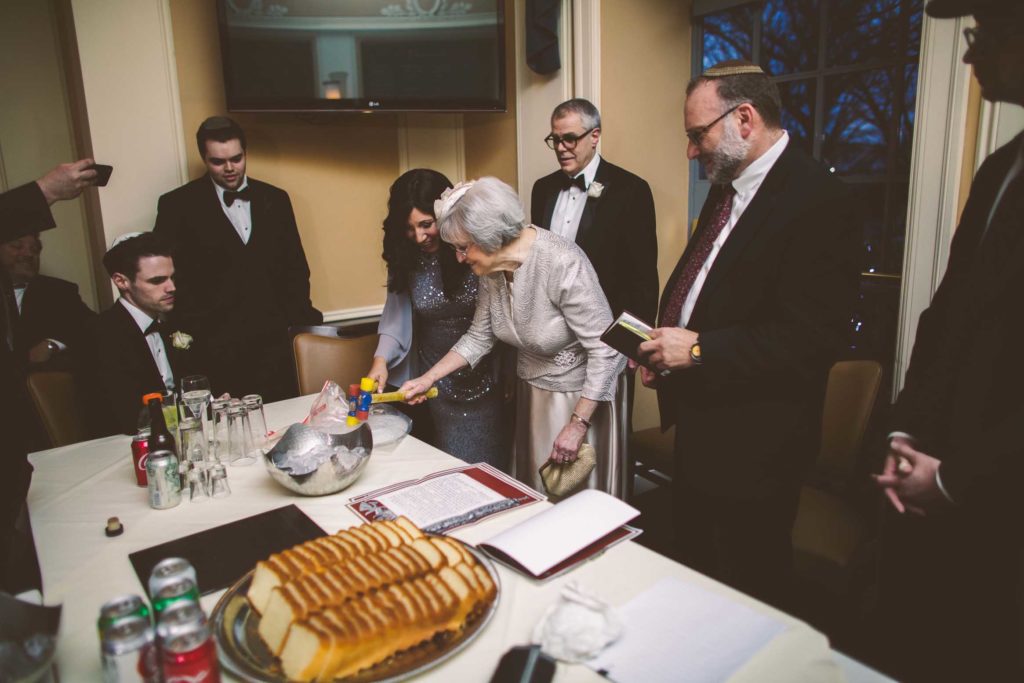
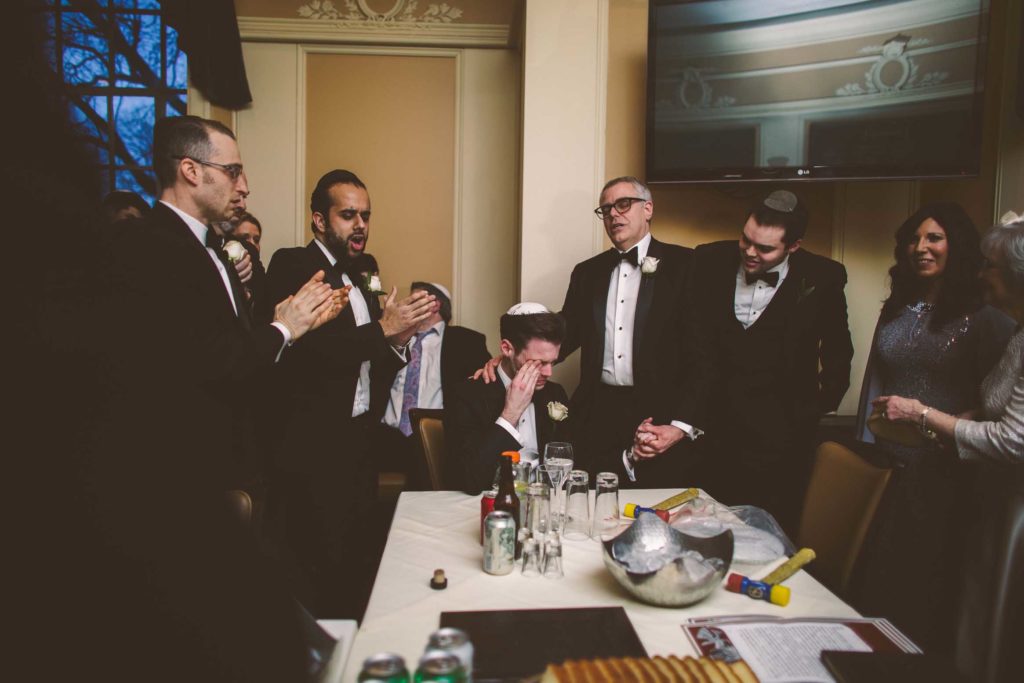

Bedeken
The groom will veil the face of his bride during the ketubah signing. Bedeken means “to veil”, and it symbolizes that the groom loves the bride for who she is inside. This Jewish wedding tradition is from the Bible. There is a story of Jacob who was fooled into marrying his true love’s sister. She had been wearing a veil, and he mistook her for the woman that he wanted to marry. Tradition is that if the groom veils the bride, he can’t be fooled!
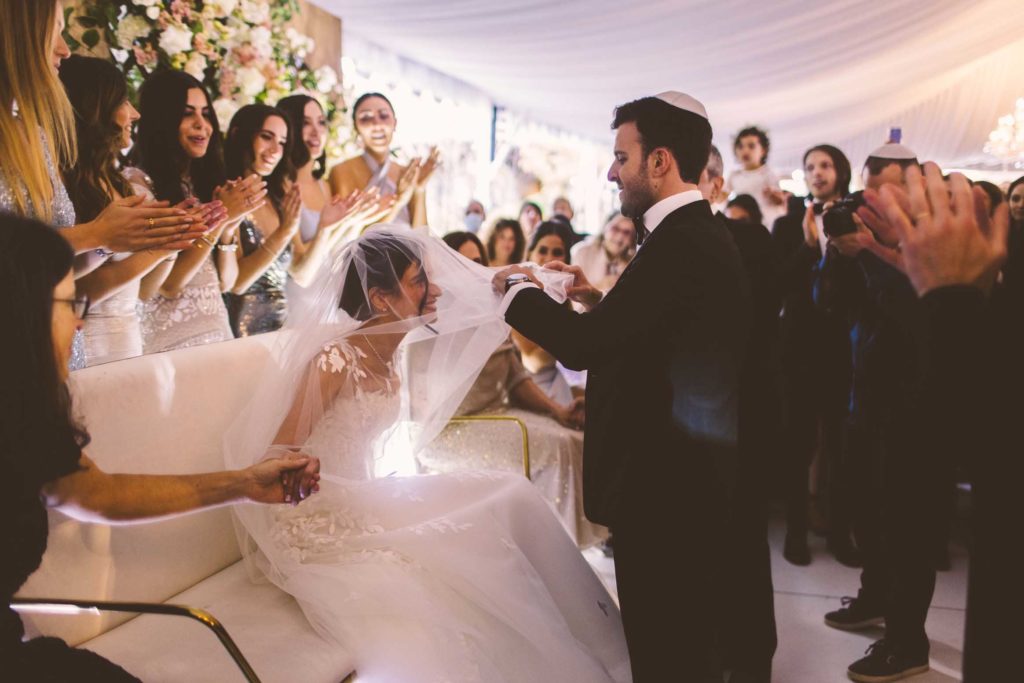
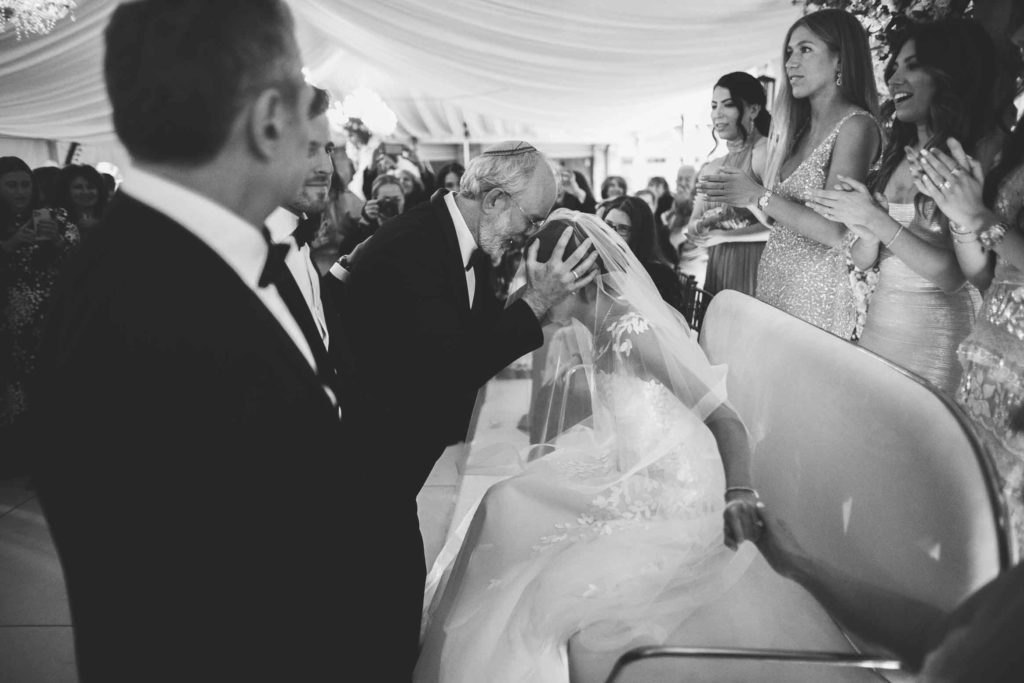
The Chuppah
The Chuppah is a canopy that the couple exchanges vows beneath. It’s meant to symbolize a home and a life that the bride and groom will build together.
The chuppah is sometimes made of a prayer shawl belonging to the bride, groom, or one of their family members. But it can really be designed any way – with flowers, greenery or other beautiful decorations.
The groom is often walked down the aisle by his parents. Once he is standing under the chuppah, the bride is walked down the aisle by her parents. Some couples choose to have both sets of parents stand alongside them during the ceremony.

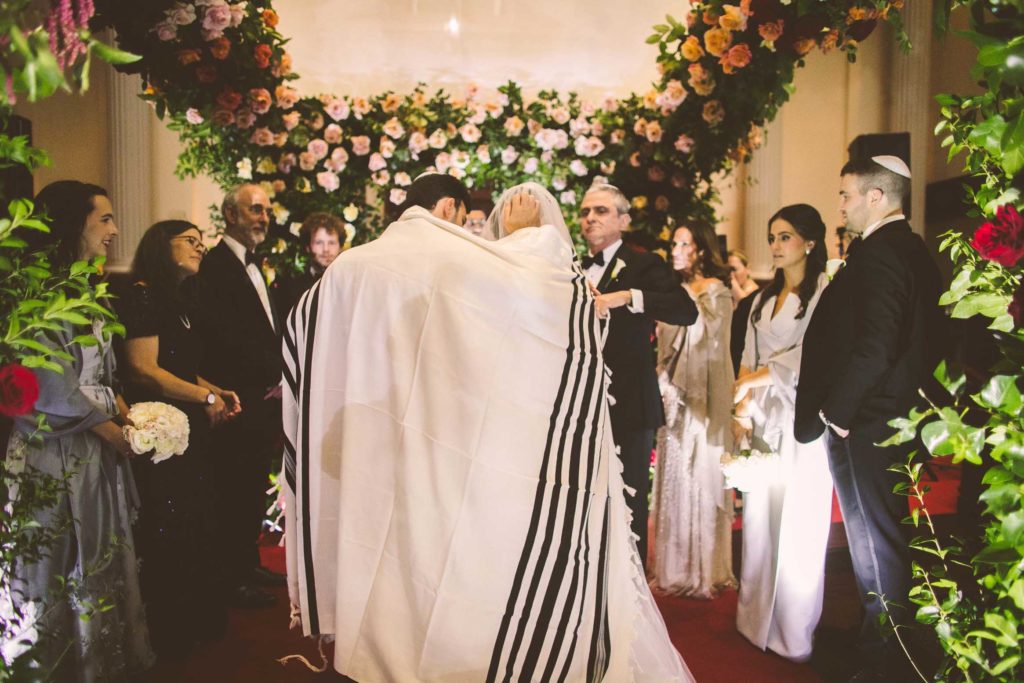
Circling
While standing under the chuppah, the bride will often circle around the groom several times. Many see this as a symbol of creating a new family.
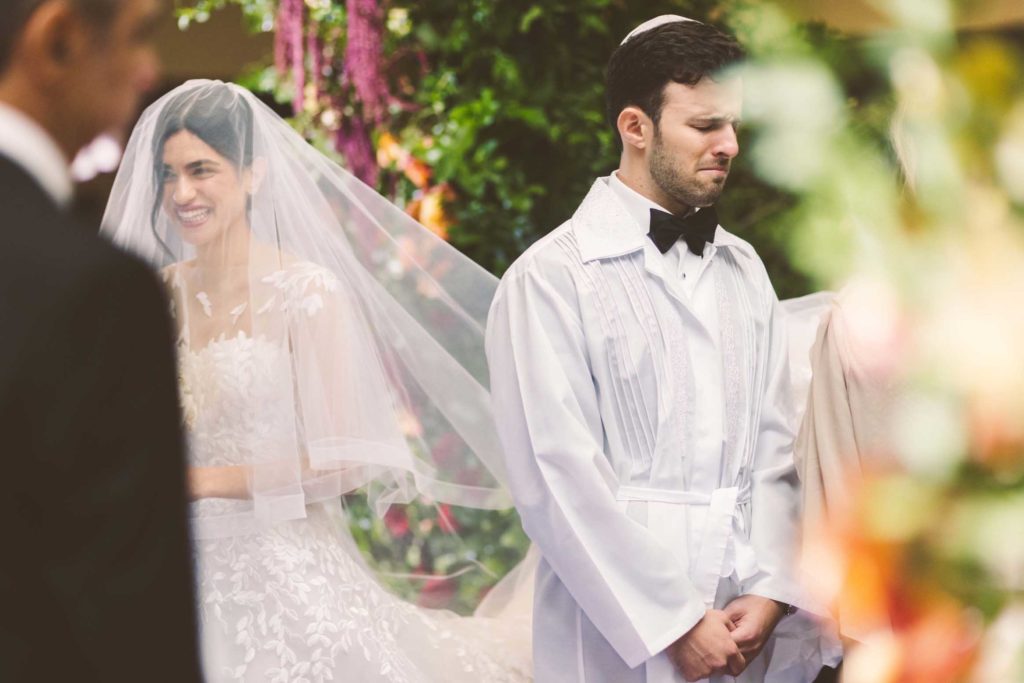
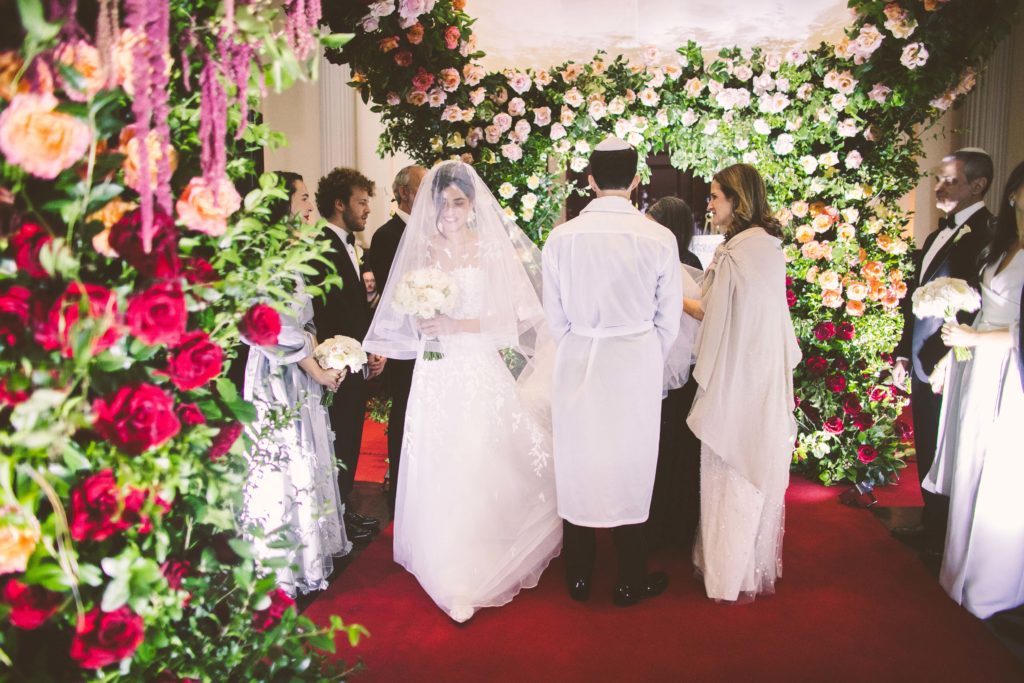
Exchanging Rings
Gold, silver, or platinum are traditionally used for Jewish wedding rings. Some couples choose not to use stones in their rings, as in ancient days the ring was considered the price of the bride. Its weight determined the price (and that could be less if there were stones inside the band)!
Seven Blessings
Sheva Brachot, or the Seven Blessings, are a series of blessings about love and joy recited at Jewish weddings. They start with a blessing over a cup of wine and are spoken by family and friends.

Breaking of the Glass & Mazel Tov
The breaking of the glass is one of the most well-known Jewish wedding traditions. Once the ceremony concludes, the groom will step on a glass that’s inside of a cloth bag.
Some people believe that this custom symbolizes the destruction of Jerusalem and the temple in ancient times. Others believe that the idea behind this is that once wed, there are no more barriers between husband and wife.
After the glass is broken, guests will cheer “Mazel tov!” as a way to congratulate the couple.
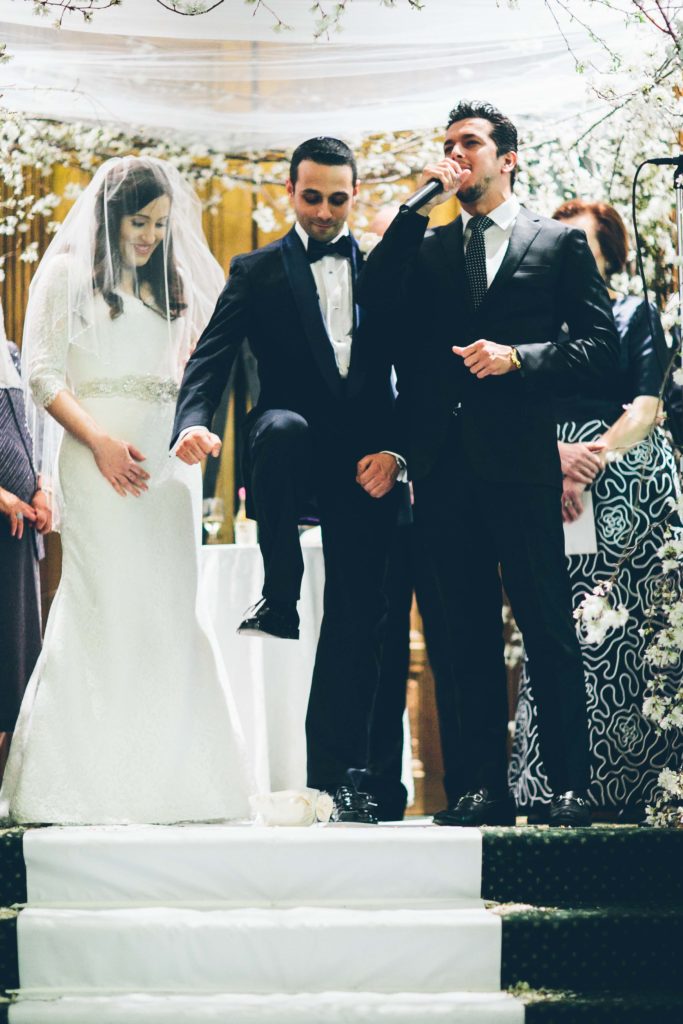
Yichud
Yichud means “seclusion”, and that’s exactly how the bride and groom spend their first few minutes together immediately after the ceremony. They will often go into a private room or area to sit, talk and take in all of the excitement of the day. This gives them a chance to celebrate privately before joining their guests at the reception. Some couples choose to share their first meal or a snack together during the yichud.
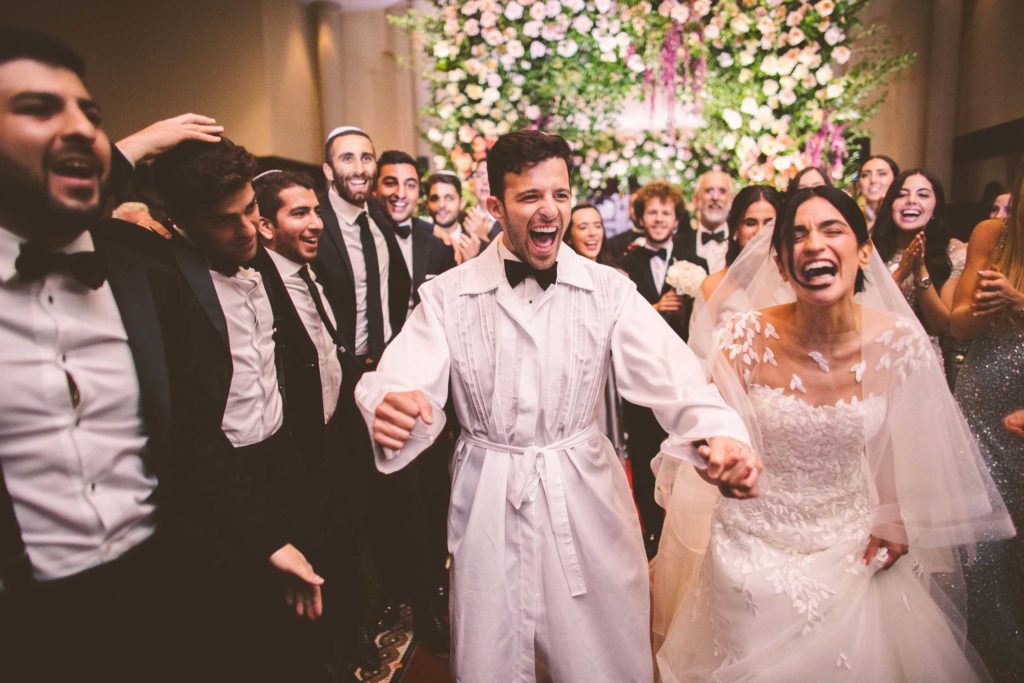
Hora
At the reception, guests will celebrate by dancing in a circle. This is called the hora, and it’s a Jewish folk dance. The word “hora” means circle. The hora has been danced for centuries and it is traditionally done during weddings, bar mitzvahs, and other celebratory occasions.
The hora typically starts with the dancers forming a circle around the dance floor and holding hands to form a chain. They then rotate in one direction until they are all facing outwards again before starting to move counter-clockwise around the outside of the circle. There are many variations of how people choose to do this dance, however.
During the dance, the bride and groom sit in chairs while holding cloth napkins. Then their guests lift them up into the air in celebration.
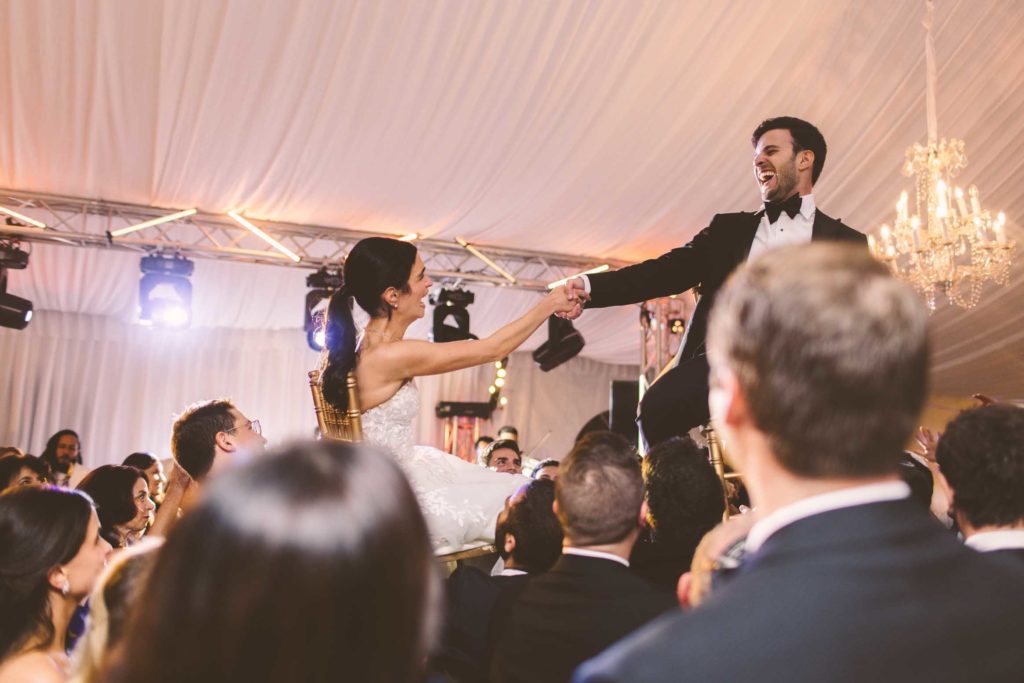
Booking us ensures your Jewish wedding memories will be captured with the best quality and care.
We hope this list of Jewish wedding traditions helps you plan a fabulous big day!
At Julian Ribinik Studios, we specialize in Jewish wedding photography. We’ve been in the business for a long time and we know how to capture those special moments that you’ll cherish forever! Contact us today to book your date with us!
Related Content: Check out Different Wedding Photography Styles at FixThePhoto!
